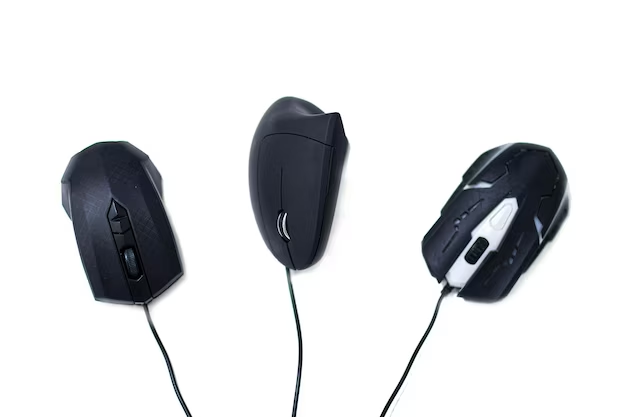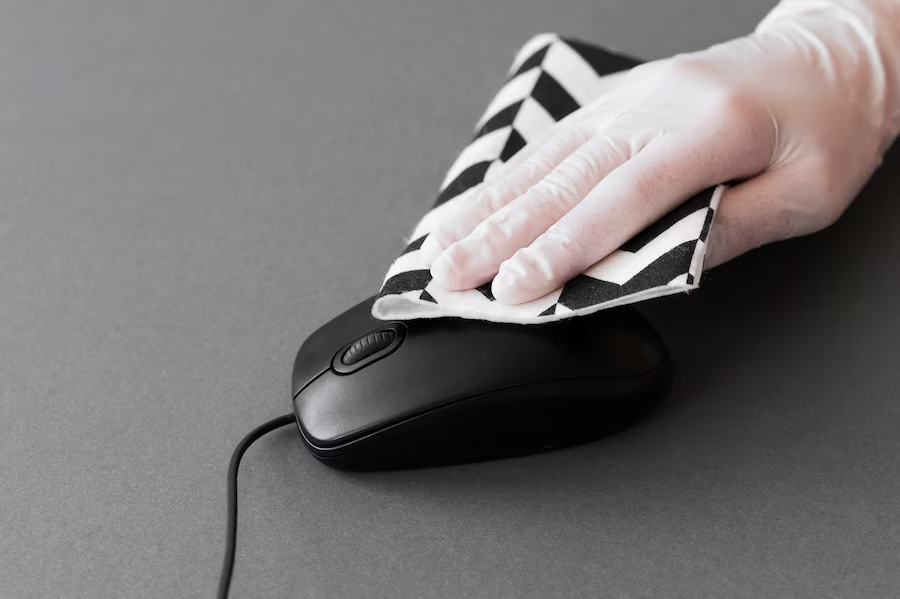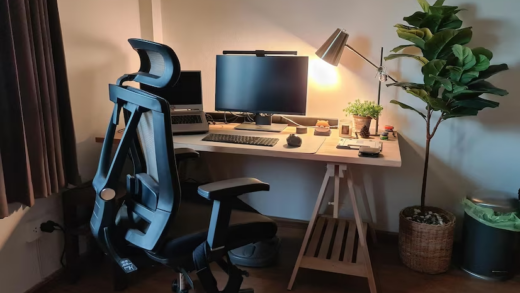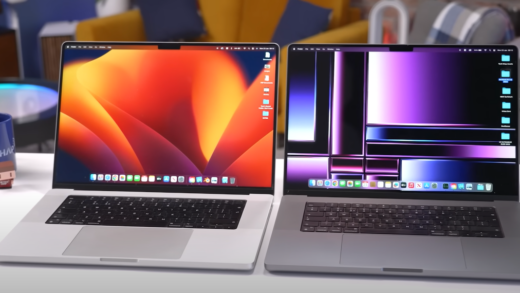When delving into the realm of graphic design, the possession of the right tools becomes paramount in the pursuit of crafting captivating visuals and engaging designs. Among these indispensable implements lies the computer mouse, a pivotal instrument empowering designers to manifest their creative visions. From the rudimentary mechanical mice of yesteryears to the cutting-edge ergonomic models of the present day, this input device has traversed a remarkable path, instigating a revolution in the way graphic designers interact with digital design software. Within this all-encompassing article, we shall embark on an exploration of the mouse’s significance in graphic design, tracing its evolutionary journey, delving into the myriad benefits it bestows, and guiding designers in selecting the most fitting mouse to align with their unique requirements.
Evolution of the Mouse in Graphic Design
The computer mouse has a fascinating history in the world of graphic design. It made its debut in the 1960s, and the first mouse was a bulky, mechanical device with a single button. As technology progressed, mice evolved into optical and laser models, providing smoother and more precise tracking on various surfaces. Additionally, the introduction of multi-button mice enabled designers to access contextual menus and perform complex actions efficiently.
Today, graphic designers can choose from an array of specialized mice designed specifically for creative work. These mice often include customizable buttons, ergonomic designs, and high DPI (dots per inch) sensitivity, making them ideal for precision-oriented tasks like photo editing, digital painting, and vector illustration.
The Importance of a Quality Mouse in Graphic Design
A high-quality mouse is a fundamental tool for graphic designers, as it can significantly impact their creativity and productivity. Here are some key reasons why investing in a good mouse is essential:
- Precision and Control: Graphic design requires intricate movements and pixel-perfect precision. A quality mouse ensures smooth cursor tracking, minimizing errors and enabling designers to work with fine details effortlessly;
- Efficiency and Speed: With customizable buttons and shortcuts, a good mouse streamlines repetitive tasks. Designers can assign specific functions to buttons, reducing the need to switch between tools constantly;
- Ergonomics: Graphic designers spend long hours at their workstations. An ergonomic mouse provides comfort and reduces the risk of repetitive strain injuries, allowing designers to work for extended periods without discomfort;
- Compatibility: Most mice are plug-and-play, making them compatible with various operating systems and design software. This flexibility allows designers to switch between computers seamlessly;
- Wireless Freedom: Wireless mice offer greater freedom of movement, eliminating cable clutter and providing a clean and organized workspace.
Types of Mice for Graphic Designers

When choosing a mouse for graphic design, there are several types to consider. Each type offers unique features and benefits to cater to specific design preferences. Here are some common types of mice for graphic designers:
- Standard Mouse: This is the traditional mouse with two buttons and a scroll wheel. While it lacks the extra features of specialized mice, it is still a reliable option for designers on a budget;
- Ergonomic Mouse: Designed to reduce strain and promote comfort, ergonomic mice come in various shapes and sizes to fit different hand sizes and grips;
- Gaming Mouse: Gaming mice often have high DPI settings, customizable buttons, and RGB lighting. These features can be useful for graphic designers who also enjoy occasional gaming;
- Pen/Tablet Mouse: Commonly used by digital artists, this type of mouse is shaped like a pen, providing a natural drawing experience on the tablet surface;
- Trackball Mouse: These mice have a stationary ball on top that users manipulate with their fingers. They are excellent for precise movements and take up less space on the desk.
Factors to Consider When Choosing a Mouse
Choosing the right mouse is a critical decision for graphic designers. To make an informed choice, consider the following factors:
| Factor | Description |
|---|---|
| DPI Sensitivity | DPI (dots per inch) determines the sensitivity of the mouse. Higher DPI values offer greater precision for intricate design work. |
| Buttons and Shortcuts | Look for customizable buttons that can be assigned to frequently used functions, such as zooming, switching tools, or adjusting brush size. |
| Ergonomics | An ergonomic design ensures that the mouse fits comfortably in your hand, reducing fatigue during extended design sessions. |
| Wired vs. Wireless | Wireless mice offer more freedom of movement, while wired mice provide a consistent connection without battery concerns. Consider your workspace setup and preferences. |
| Surface Compatibility | Some mice perform better on certain surfaces. Ensure that the mouse you choose works well on the type of mouse pad or desk surface you use most frequently. |
| Budget | There is a wide range of mice available at various price points. Consider your budget while also prioritizing essential features for your graphic design tasks. |
| Brand and Reviews | Research reputable brands and read reviews from other graphic designers to gain insights into the performance and reliability of the mouse you are considering. |
Wired vs. Wireless Mice: Pros and Cons
When it comes to choosing between wired and wireless mice, both options have their advantages and drawbacks. Here’s a detailed comparison:
Wired Mice:
| Pros | Cons |
|---|---|
| Pros | Cons |
| Stable Connection | Limited freedom of movement |
| No Battery Concerns | Cable clutter on the desk |
| Often More Affordable | Can restrict movement when cable is too short |
| No Need to Charge | Not suitable for remote work or presentations |
Wireless Mice:
| Pros | Cons |
|---|---|
| Greater Freedom of Movement | Requires charging or battery replacement |
| Ideal for Remote Work | Wireless interference or signal drop can occur |
| Clean and Organized Workspace | Slightly higher price point compared to wired counterparts |
| Great for Presentations | Battery life may vary depending on usage |
Best Mouse Brands for Graphic Design
While there are many reputable brands that offer mice for graphic design, some stand out for their dedication to ergonomic design and precision. Here are some top brands to consider:
- Logitech: Logitech is well-known for producing a wide range of high-quality mice suitable for various design tasks. Their mice often feature customizable buttons and ergonomic designs;
- Microsoft: Microsoft mice are designed with both comfort and performance in mind. Their mice offer smooth tracking and reliable connectivity;
- Wacom: For digital artists, Wacom is a go-to brand. They specialize in pen/tablet mice that provide an intuitive drawing experience for creative professionals;
- Razer: Razer’s gaming mice have gained popularity among graphic designers due to their high DPI sensitivity and customizable buttons, making them suitable for both gaming and design tasks;
- Apple: If you are using a Mac, Apple’s Magic Mouse is a sleek and wireless option that integrates seamlessly with macOS.
Troubleshooting Common Mouse Issues
As with any technological device, mice can sometimes encounter issues that hinder their performance. Here are some common problems and troubleshooting tips:
| Issue | Troubleshooting |
|---|---|
| Jumpy Cursor | Ensure that the mouse is on a smooth and even surface. If using an optical mouse, check for dust or debris on the sensor. Consider using a mouse pad or updating the mouse driver. |
| Unresponsive Buttons | Check the battery level if using a wireless mouse. For wired mice, ensure the cable is securely connected. Restart the computer and try a different USB port if the issue persists. |
| Erratic Movement | Try adjusting the DPI settings to see if it affects the mouse’s behavior. Ensure that the mouse is not placed near electronic devices that may cause interference. |
| Double Clicking Instead of Single Click | This issue may be due to a faulty mouse switch. Consider replacing the mouse or contact the manufacturer for support. |
| Lag or Delayed Response | Check for wireless interference and ensure the mouse receiver is within the recommended distance from the mouse. For wired mice, try a different USB port or cable. Restart the computer if needed. |
Tips for Maintaining Your Mouse

To ensure your mouse continues to perform optimally, consider the following maintenance tips:
- Keep It Clean: Regularly clean the mouse’s surface and sensor to avoid tracking issues. Use compressed air to remove dust from the crevices;
- Use a Mouse Pad: A good mouse pad not only provides a smooth surface for accurate tracking but also protects the mouse’s feet from wear and tear;
- Store It Properly: When not in use, store the mouse in a safe and clean environment to prevent damage;
- Update Drivers: Keep the mouse drivers up-to-date to ensure compatibility with your operating system and design software;
- Replace Batteries: If you are using a wireless mouse, replace the batteries when they are running low to maintain consistent performance.
Conclusion
The mouse remains an essential tool for graphic designers, and choosing the right one can significantly impact creativity and productivity. With a myriad of options available, understanding the needs of your design tasks and ergonomic preferences will guide you toward the perfect mouse for your work.
From the early days of mechanical mice to the present age of wireless precision, the mouse has undoubtedly transformed the way designers interact with their digital canvas. With continuous advancements in technology and ergonomic design, the mouse will continue to be an indispensable companion in the world of graphic design, enabling designers to translate their creative visions into stunning and impactful masterpieces. So, whether you’re a seasoned professional or an aspiring designer, investing in a quality mouse is a step toward achieving design greatness.
FAQ
Yes, a mouse is essential for graphic design as it offers precise control, customizable shortcuts, and a more comfortable experience compared to using a touchpad.
Absolutely! Gaming mice often have features that can benefit graphic designers, such as high DPI settings and programmable buttons for shortcuts.
Yes, wireless mice have come a long way in terms of reliability and responsiveness. Modern wireless mice offer a seamless experience for graphic design tasks.
When choosing a mouse, consider factors like DPI sensitivity, ergonomics, customizable buttons, and compatibility with your operating system and design software.
Yes, many manufacturers offer ambidextrous or left-handed versions of their mice to accommodate all users.





